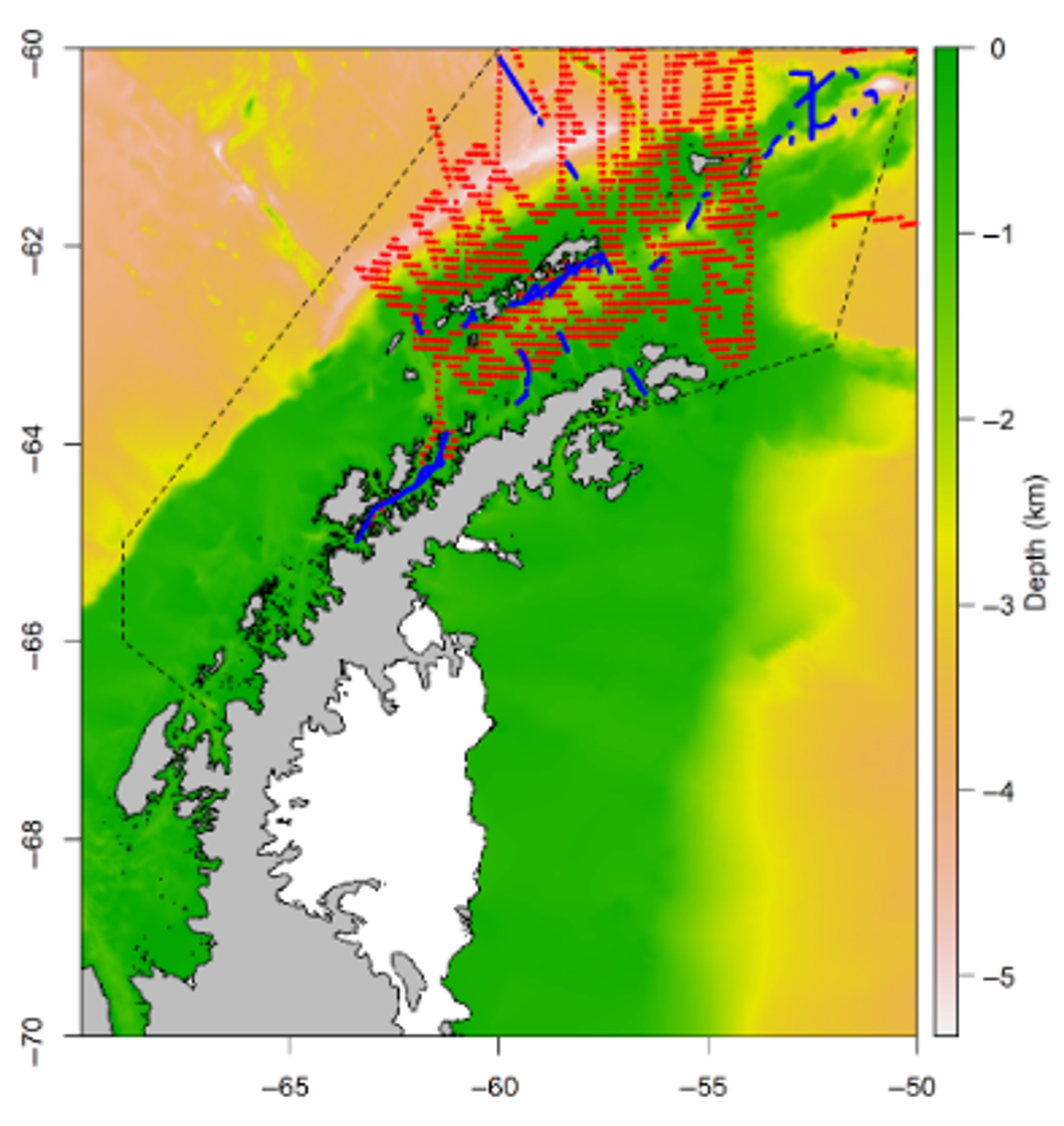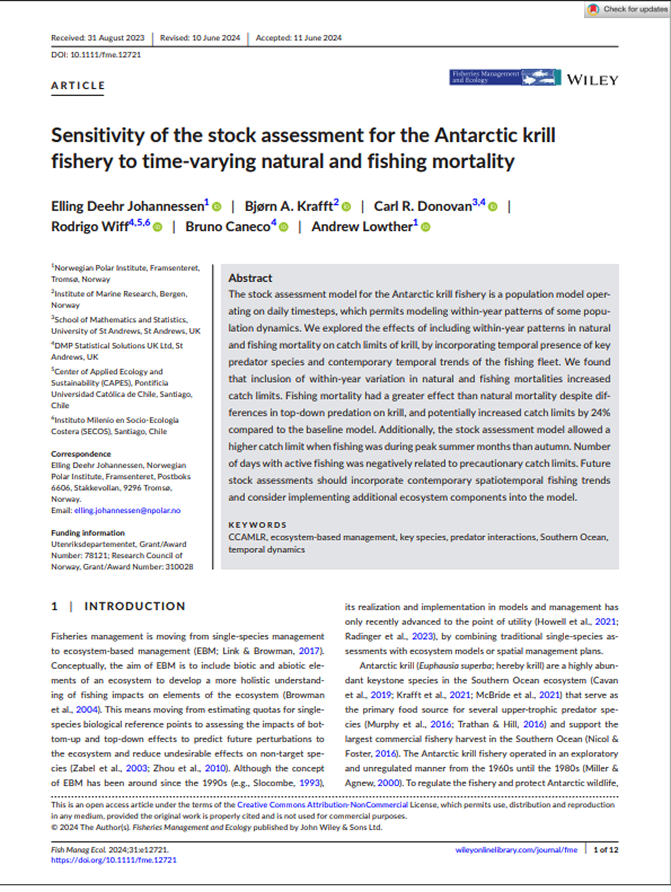Biomass
Fisheries management
Antarctic ecosystem
Krill (Euphausia superba)
Using seabird and whale distribution models to estimate spatial consumption of krill to inform fishery management
Summary
This study provides the first complete mapping of how much krill is eaten by different predator species during summer in the Antarctic Peninsula region. Using animal tracking devices, ocean surveys, and biological models, researchers calculated krill consumption by penguins, flying seabirds, fur seals, and large whales. The findings reveal that 73% of krill consumed by the studied species is eaten by humpback and fin whales, which are not directly included in current CCAMLR fisheries management plans. Krill consumption occurs in highly concentrated areas at small geographic scales, particularly near penguin breeding colonies and along underwater cliff edges where the continental shelf drops off. The study demonstrates the need for fisheries management that matches the specific areas where predators and fishing operations interact, and highlights the important role that recovering whale populations play in the Antarctic ecosystem.

1
Map showing FAO fishing zone 48.1 (solid line boundary) along with the actual krill fishing area over the past 5 years (dotted line boundary; from Trathan et al., 2018). The map also displays survey routes for seabirds and fur seals from US Antarctic Marine Living Resources data (red tracks; Santora & Veit, 2013) and whale survey routes from Brazilian Antarctic Program data (blue tracks).Key Findings
1
This study provides the most comprehensive assessment to date of krill consumption by multiple predator groups in the northwest Antarctic Peninsula region, though it acknowledges that important predators remain unstudied.2
Humpback and fin whales consume 760,000 to 1,100,000 tonnes of krill during summer, far exceeding the 155,000 tonnes taken by commercial fishing. 3
Large whales account for 73% of total krill consumption by the studied species, yet these whales are not directly considered in current fisheries management. 4
The highest krill consumption occurs near penguin breeding colonies and along the shelf-break where the continental shelf drops to deeper waters.5
Krill consumption varies greatly and occurs in concentrated hotspots across small geographic areas. 6
Significant knowledge gaps remain for pack-ice seals, fish species, squid, and other whale species not included in this study. 7
Fisheries management needs to operate at the same geographic and seasonal scales where predators and fishing activities overlap.

